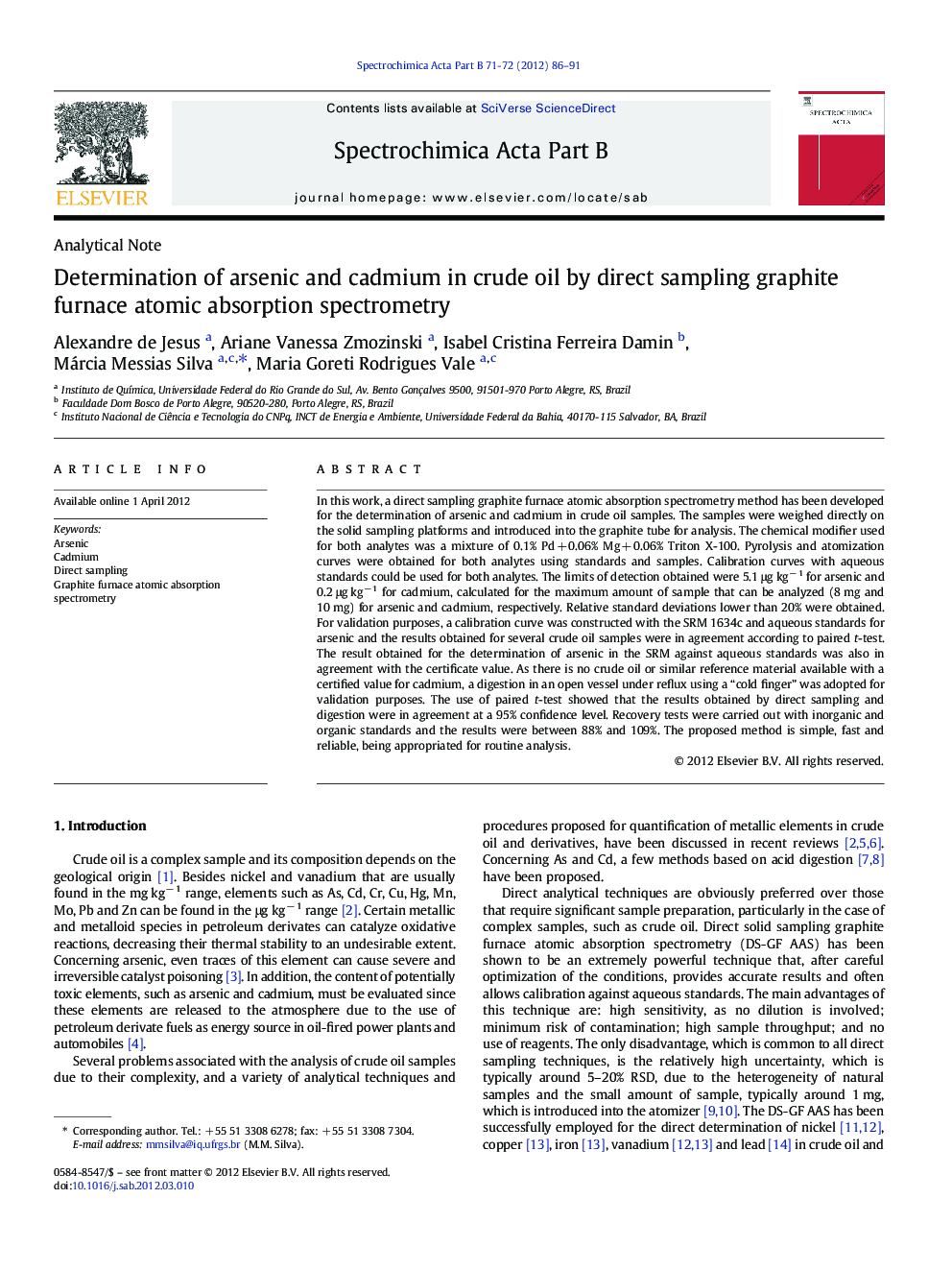| Article ID | Journal | Published Year | Pages | File Type |
|---|---|---|---|---|
| 1239891 | Spectrochimica Acta Part B: Atomic Spectroscopy | 2012 | 6 Pages |
In this work, a direct sampling graphite furnace atomic absorption spectrometry method has been developed for the determination of arsenic and cadmium in crude oil samples. The samples were weighed directly on the solid sampling platforms and introduced into the graphite tube for analysis. The chemical modifier used for both analytes was a mixture of 0.1% Pd + 0.06% Mg + 0.06% Triton X-100. Pyrolysis and atomization curves were obtained for both analytes using standards and samples. Calibration curves with aqueous standards could be used for both analytes. The limits of detection obtained were 5.1 μg kg− 1 for arsenic and 0.2 μg kg− 1 for cadmium, calculated for the maximum amount of sample that can be analyzed (8 mg and 10 mg) for arsenic and cadmium, respectively. Relative standard deviations lower than 20% were obtained. For validation purposes, a calibration curve was constructed with the SRM 1634c and aqueous standards for arsenic and the results obtained for several crude oil samples were in agreement according to paired t-test. The result obtained for the determination of arsenic in the SRM against aqueous standards was also in agreement with the certificate value. As there is no crude oil or similar reference material available with a certified value for cadmium, a digestion in an open vessel under reflux using a “cold finger” was adopted for validation purposes. The use of paired t-test showed that the results obtained by direct sampling and digestion were in agreement at a 95% confidence level. Recovery tests were carried out with inorganic and organic standards and the results were between 88% and 109%. The proposed method is simple, fast and reliable, being appropriated for routine analysis.
► A direct sampling GF AAS method to determine As and Cd in crude oil was proposed. ► The conventional chemical modifier Pd/Mg has been used to stabilize As and Cd. ► Calibration curves with aqueous standards have been used for both analytes. ► The validation was performed by CRM analysis and comparison with digestion method.
